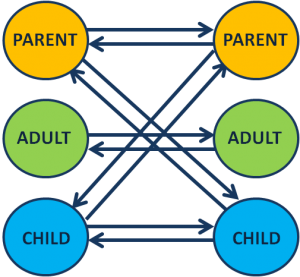




Phone: 0439 947 109 Email: phowfield@hotmail.com
Transactional Analysis and Art Therapy as Part of an Integral Approach
Paulina Howfield is a psychotherapist who uses a wide number of modalities in her Art Therapy and Psychotherapy Practise, in this article the author, Nancy Davidson, wrote about one of her integrative approaches to working with clients that involves combining transactional analysis and art therapy.
 In her Transpersonal Psychotherapy and Art Therapy practise Ms Howfield uses Transactional Analysis and Art Therapy as part of her approach with a wide range of clients including children, families, couples and groups. She has used transactional analysis and art therapy across cultures and in many countries. She has found transactional analysis and art therapy to be a valuable part of an integrative approach in many situations, especially those where communication and relationship difficulties are being experienced. She has also found transactional analysis and art therapy to be useful when incorporated as a supervisory tool with Art Therapy students.
In her Transpersonal Psychotherapy and Art Therapy practise Ms Howfield uses Transactional Analysis and Art Therapy as part of her approach with a wide range of clients including children, families, couples and groups. She has used transactional analysis and art therapy across cultures and in many countries. She has found transactional analysis and art therapy to be a valuable part of an integrative approach in many situations, especially those where communication and relationship difficulties are being experienced. She has also found transactional analysis and art therapy to be useful when incorporated as a supervisory tool with Art Therapy students.
Ms Howfield states that TA is an incredibly adaptable modality which fits easily with other modalities and which can be grasped easily by clients. She finds it a useful tool for pulling together thoughts, feelings and behaviour; helping clients to understand their own and others communication patterns; and enabling them to recognise how verbal and non-verbal signals in interactions can impact on the effectiveness of communication. TA and Art Therapy also gives clients a greater sense of awareness around patterns in their lives and their prior history.
When using Transactional Analysis and Art Therapy as part of her approach Ms Howfield will:
-
Identify the problem
-
Look at clients’ thoughts, feelings and behaviours
-
Listen for and identify ego states
-
Listen for and identify games and payoffs
-
Listen for the OK position.
-
Explore the energy and emotion behind the OK position
-
Explore the payoff (pain)
-
Seek to help clients retrain their minds
 Ms Howfield emphasises that it is important to always seek to understand the essence of a transaction. If therapists get “stuck”, going back to Parent, Adult and Child, identifying personas and working with the ego states always throws up more information. Because TA is used in a collaborative relationship, it is important that counsellors check out with clients as they go.
Ms Howfield emphasises that it is important to always seek to understand the essence of a transaction. If therapists get “stuck”, going back to Parent, Adult and Child, identifying personas and working with the ego states always throws up more information. Because TA is used in a collaborative relationship, it is important that counsellors check out with clients as they go.
Introduction of TA concepts to clients occurs as appropriate in a given session and a whiteboard or notepad are used to diagram the ego states and interactions.
Specific Methods for Identifying EGO States When Using Transactional Analysis and ART Therapy
Ms Howfield uses many verbal and non-verbal methods to identify ego states. Some examples are as follows:
-
Music provides non-verbal opportunities for clients to engage with specific ego states
-
Roleplays can be used with two or more people
-
Analysing transactions
-
Looking at words
-
Exploring feelings
-
Observing body language
-
Art therapies such as sandplay, painting and puppets
-
Games and picture cards that highlight dominant ego states which operate when people are in vulnerable positions.

